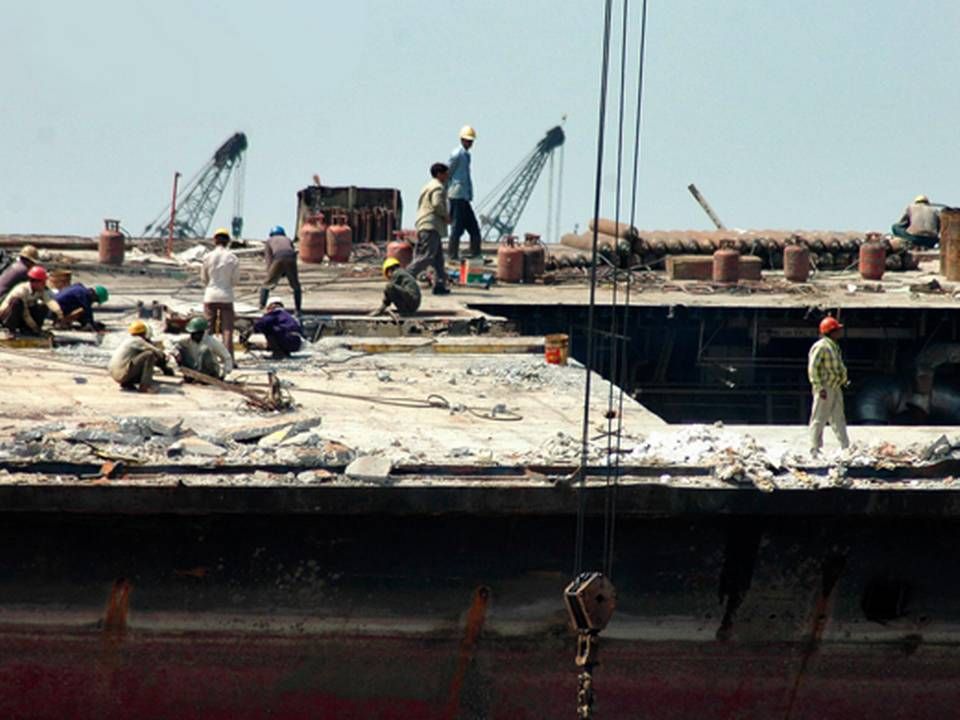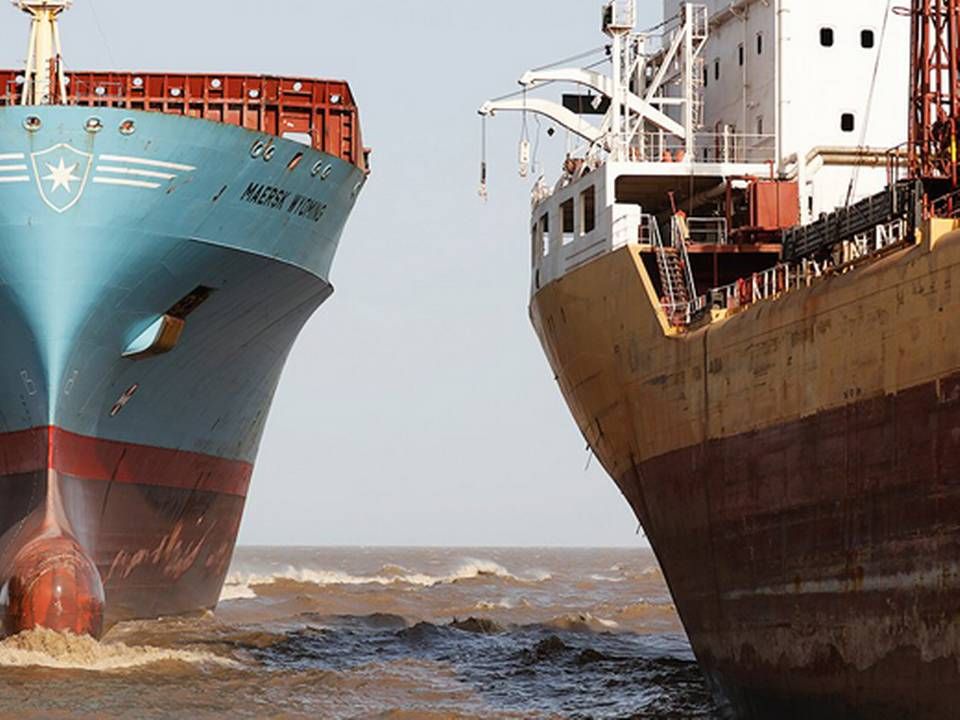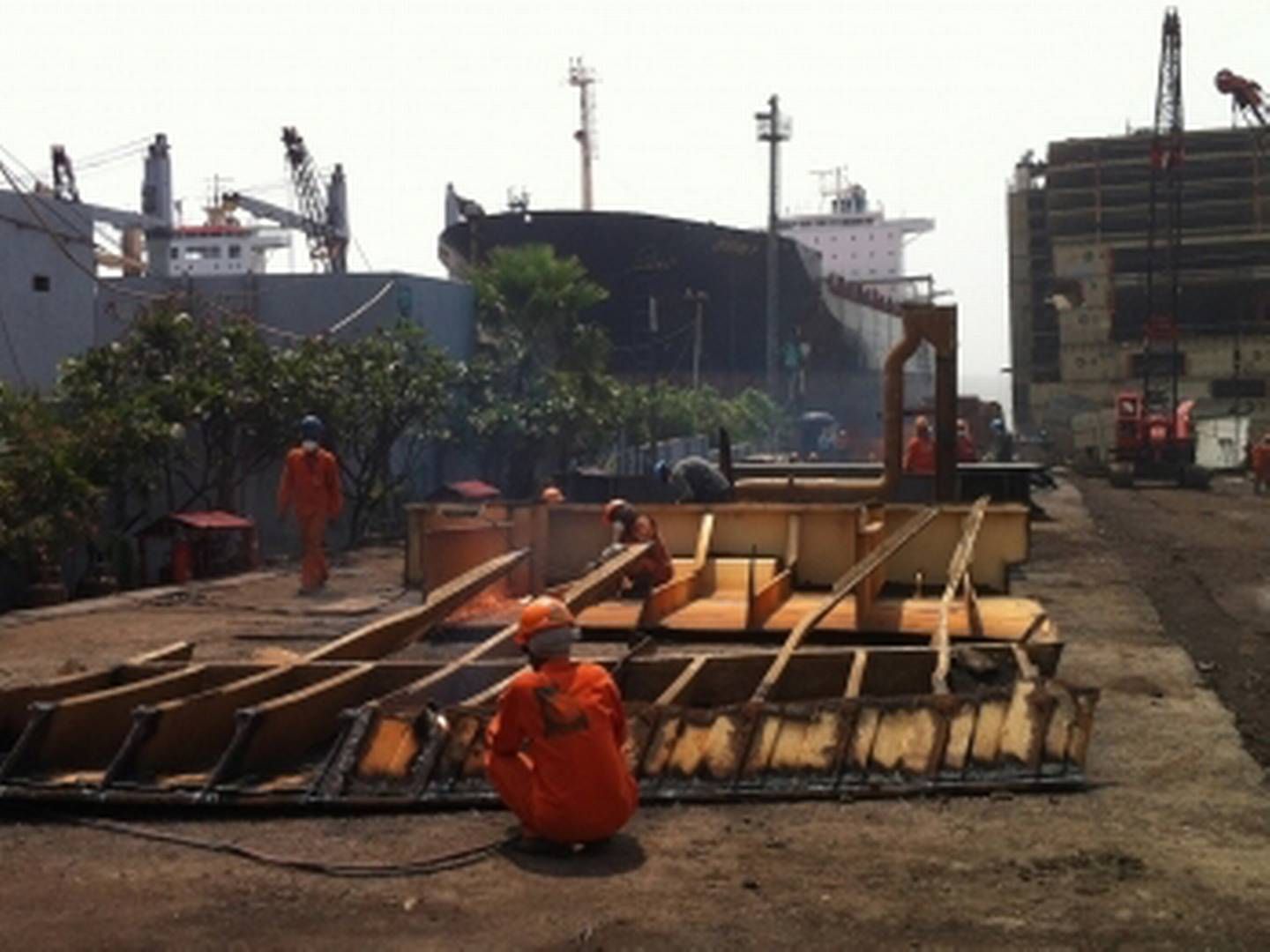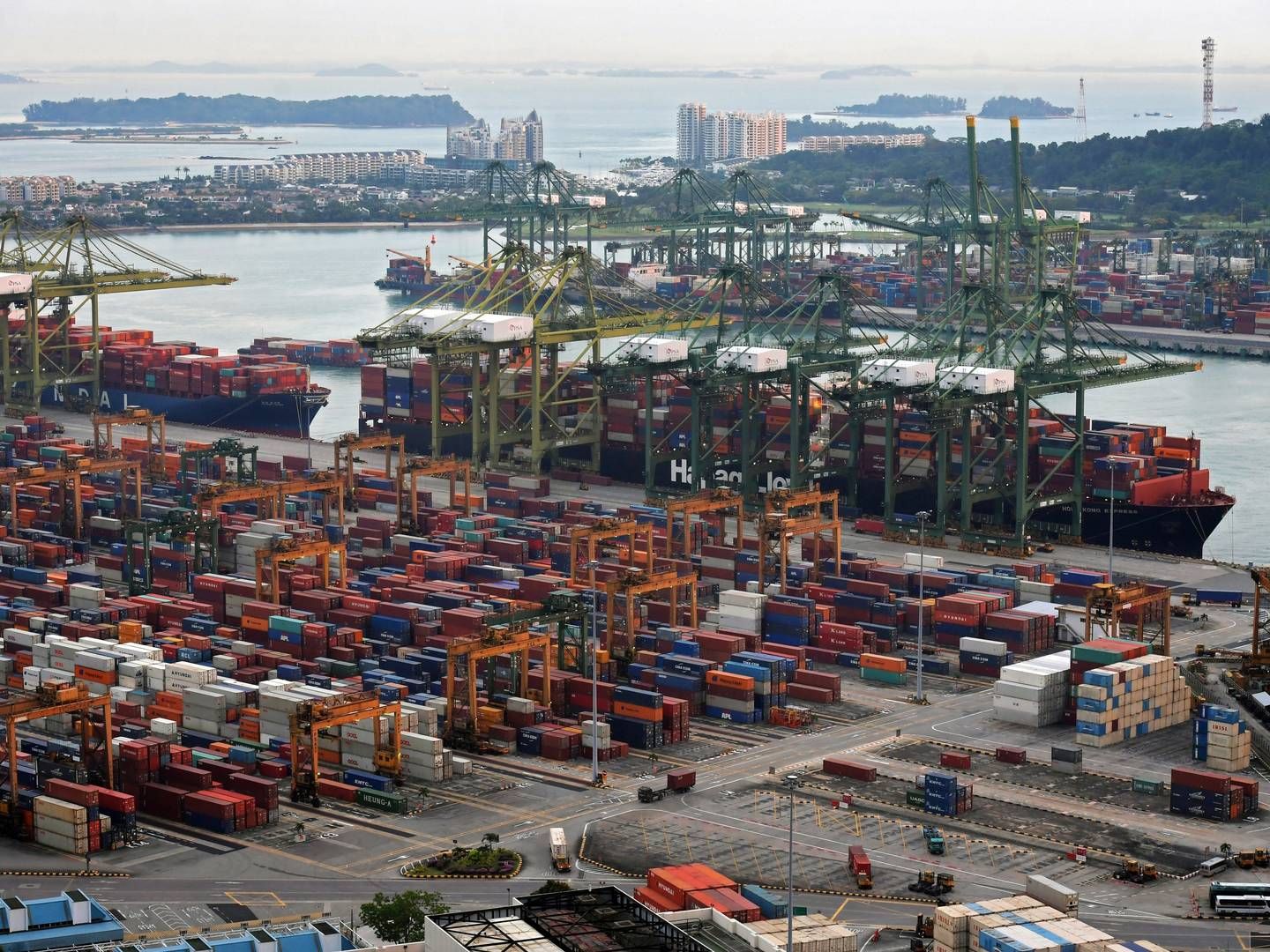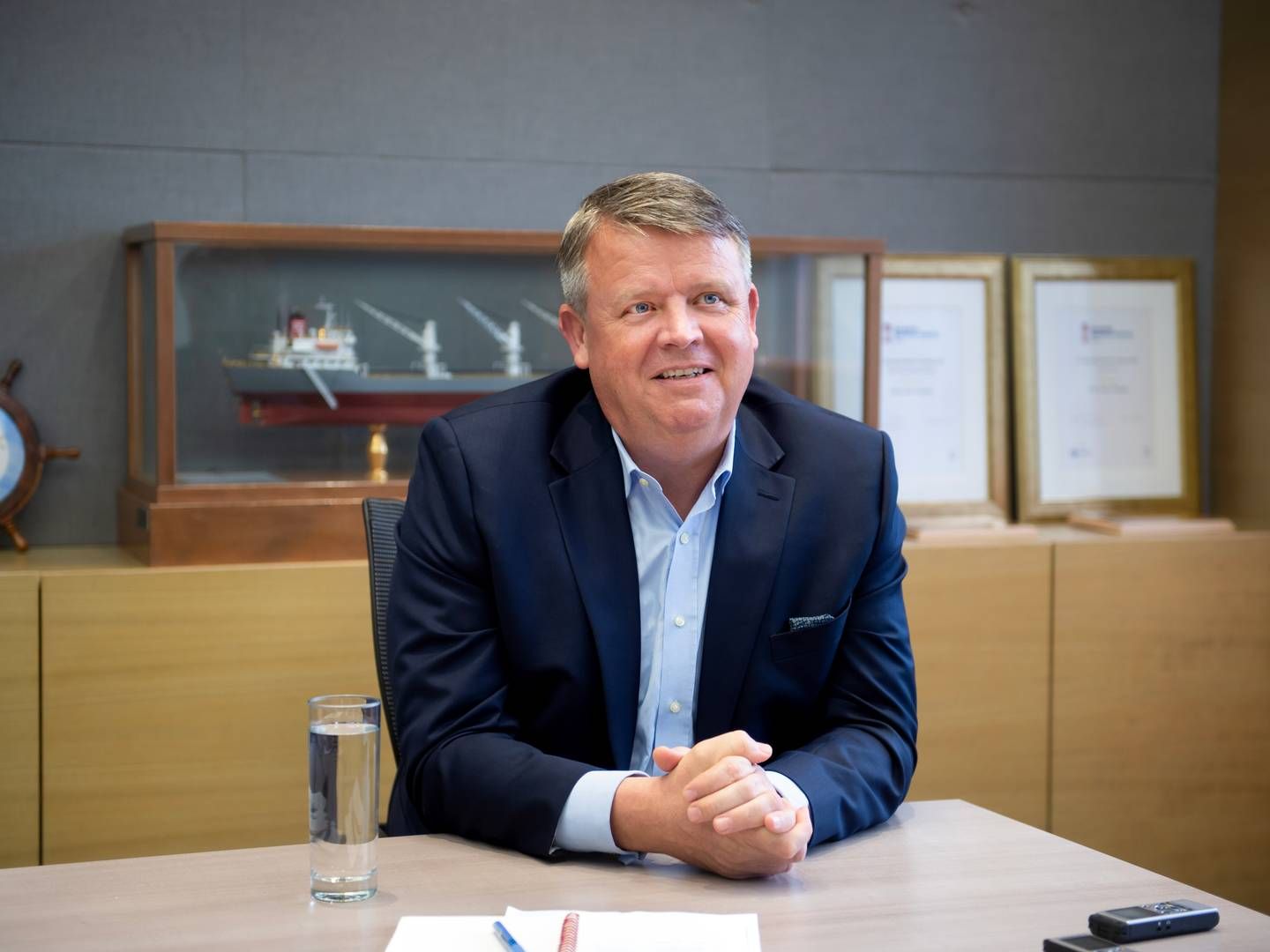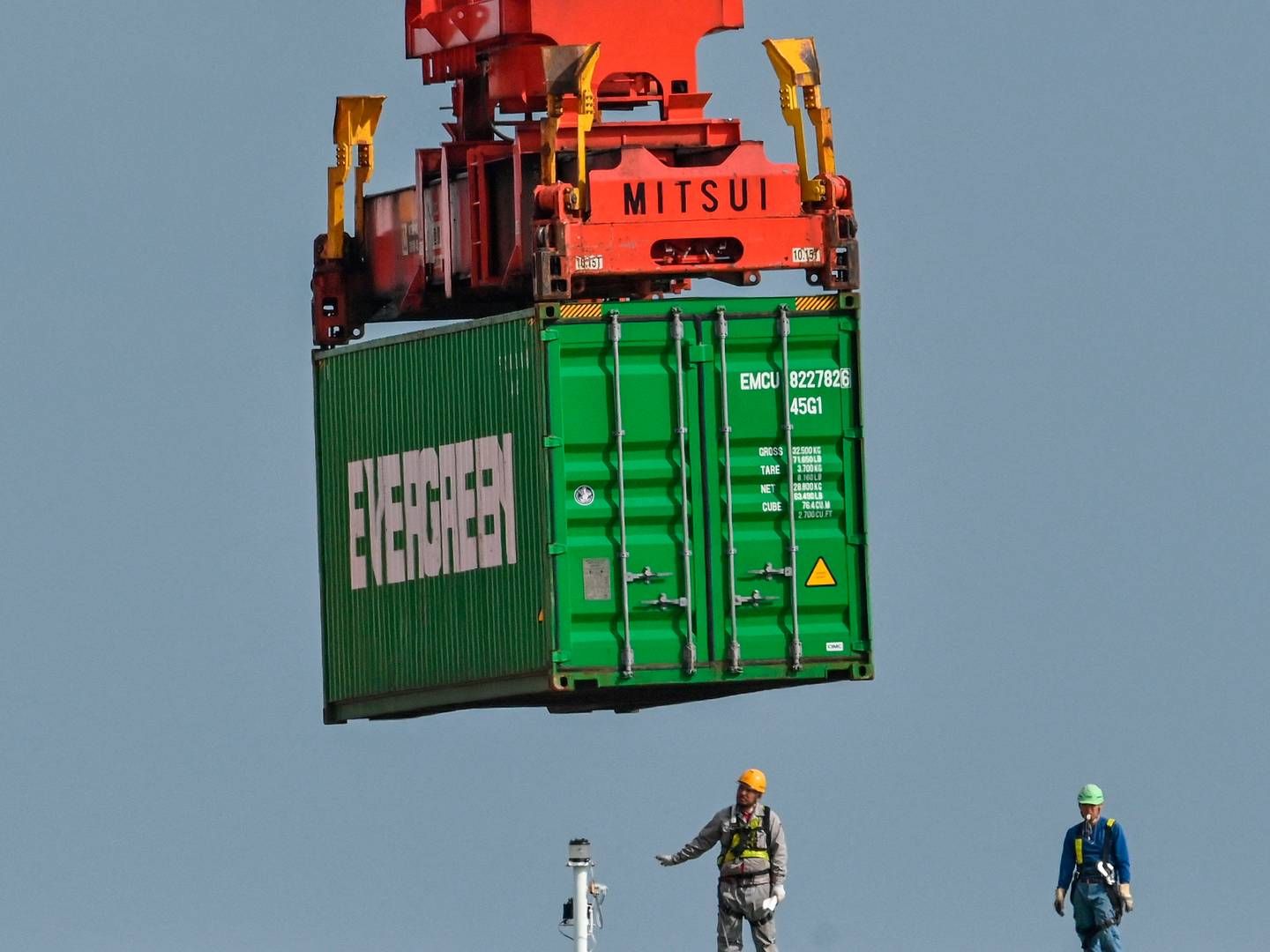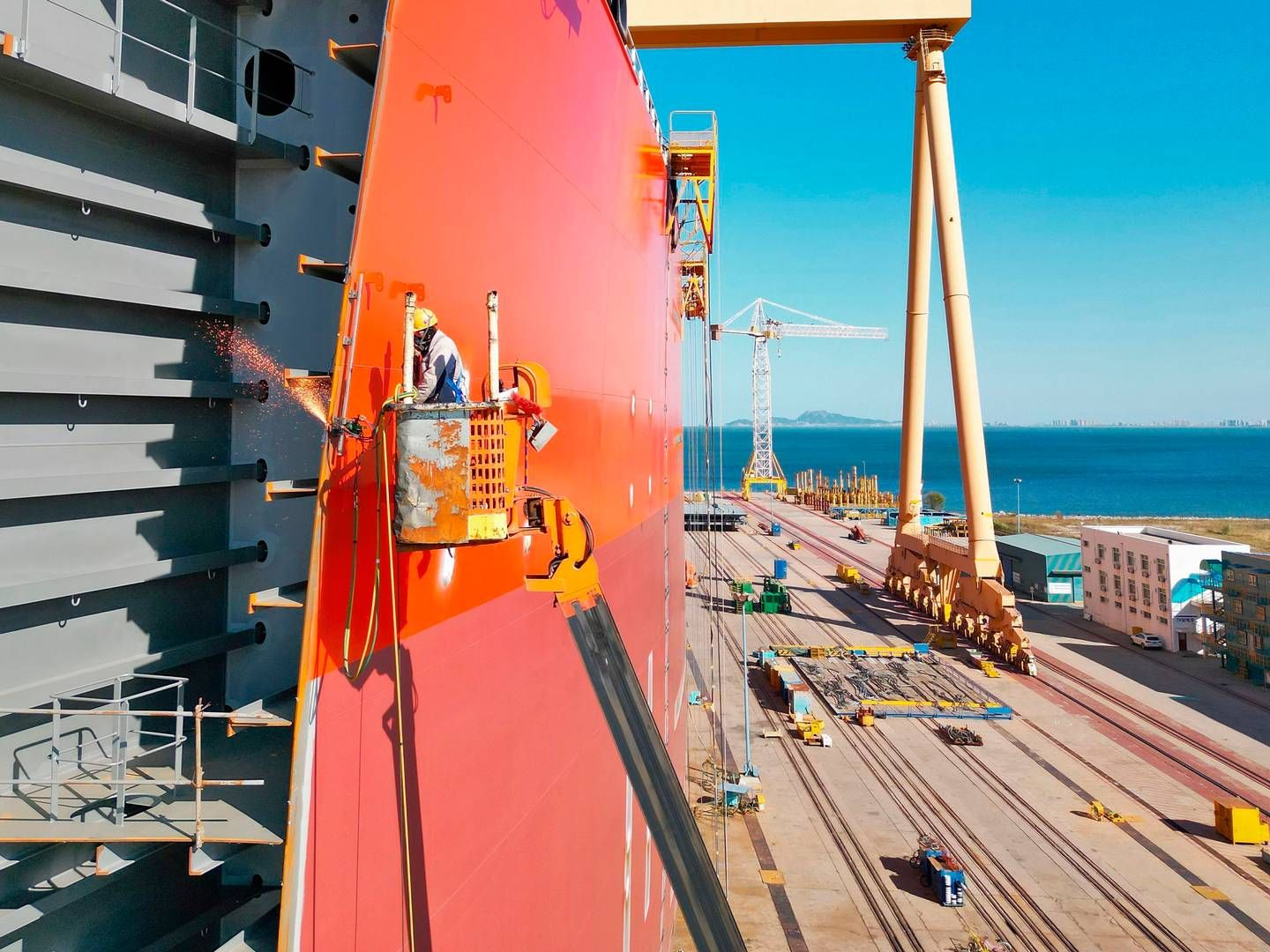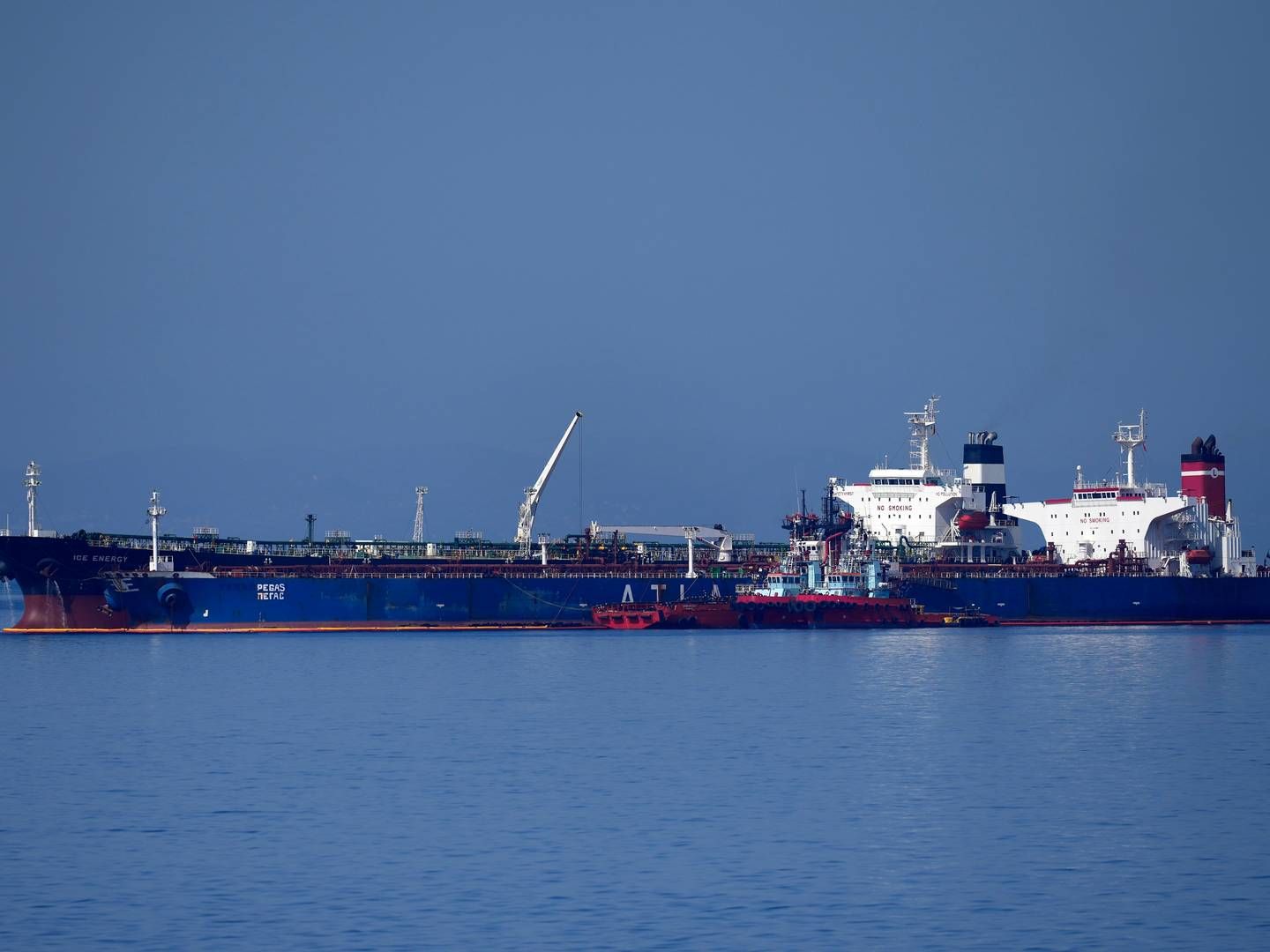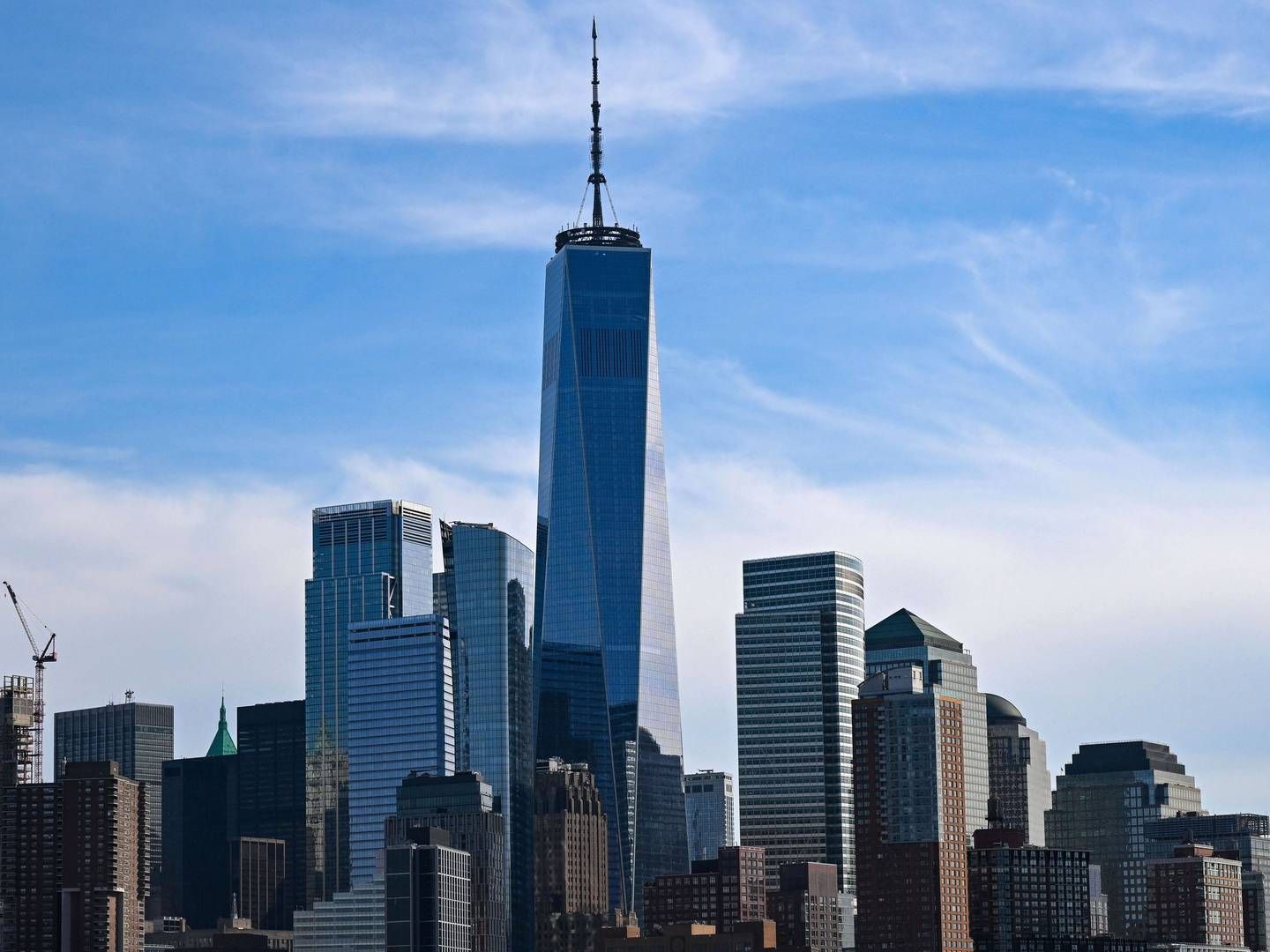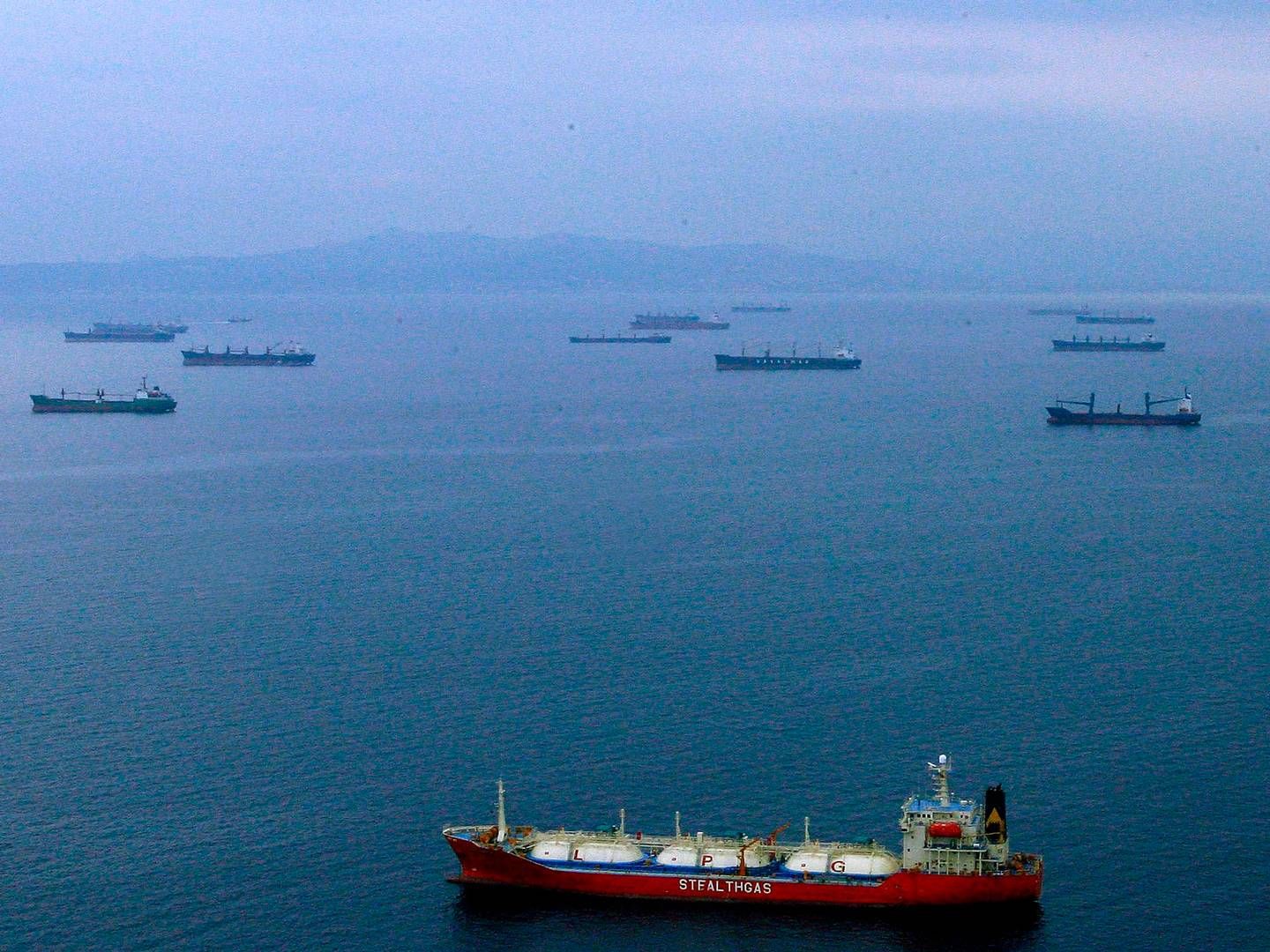Maersk has settled in at the world's ship graveyard
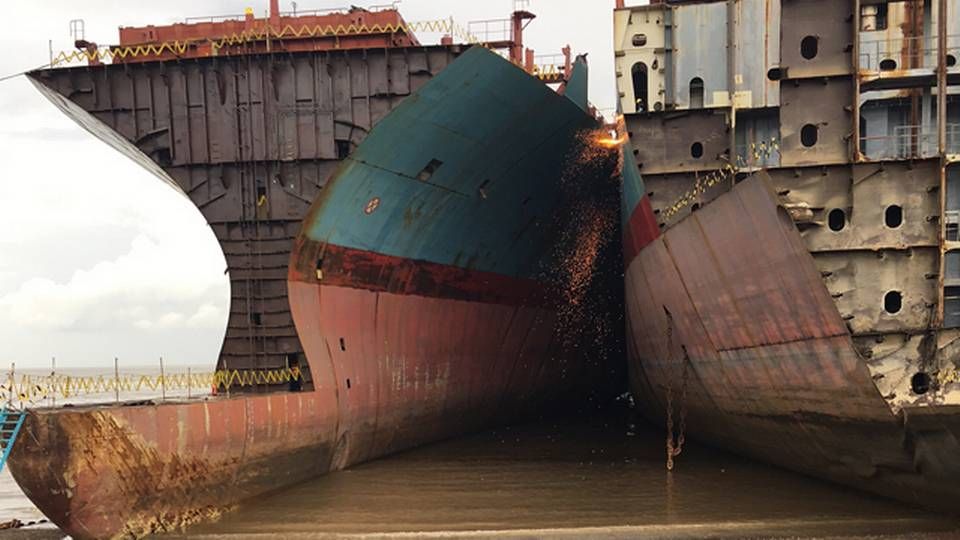
ALANG
15 helmet-clad men with bare feet and their pants rolled up to their knees start trenching very slowly into the mud left behind by the tidewater. Several of the men use canes to feel the ground under their feet and they are all carrying a long metal wire. The wire must be carried into the water to a passenger vessel that is set in the mud almost 150 meters out. The wiry chain will be fastened to the vessel, and when the tidewater returns, the ship can be pulled onto the beach where it will be recycled and dismantled.
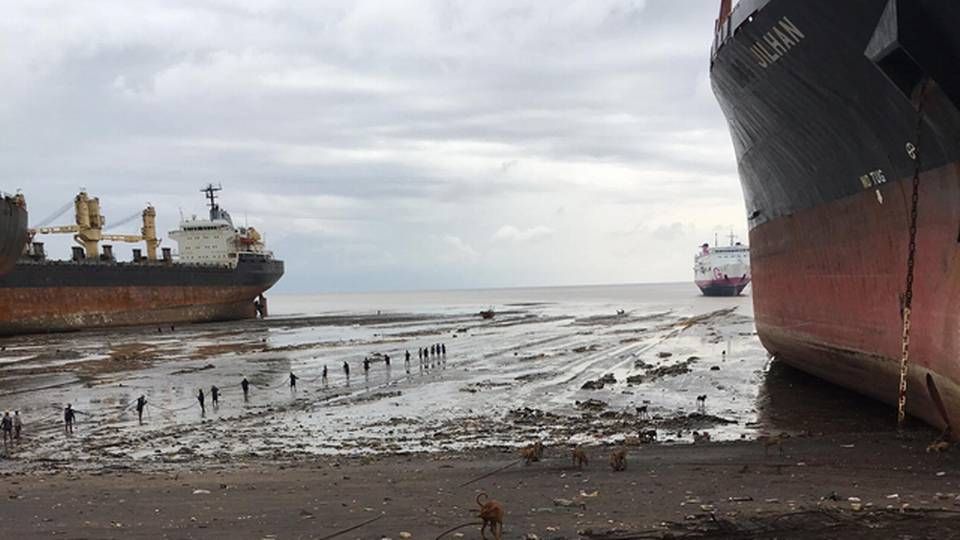
ShippingWatch has arrived at the shipping industry's perhaps most criticized workplace, which is also what many would consider a dark spot on the conscience of shipowners. This may be why it is so difficult to gain access to one of the many shipbreaking facilities along the beaches of Alang. If you do not work there and you are not a customer there, you need a special permit from Gujarat Maritime Board, the maritime authority in the state of Gujarat where Alang is located.
In front of a vessel, a flock of wild dogs runs around the beach, barking. On both sides, as far as the eye can see, vessel parts and entire vessels are scattered on the dark sand. Some of the ships have just arrived and they look as though they simply sailed straight onto the beach. Other vessels show clear signs of dismantling. Slowly but surely. Welding flames and the sound of hammering dominates the beach, which stretches more than 10 kilometers and is home to about 170 yards.
Try a free 14-day trial subscription to ShippingWatch
It is at least 30 degrees Celsius and the stench of burnt metal mixes with the smell of hot asphalt and rotten garbage stinging the nose. Many workers sit so high up on the vessels that one can only barely see their helmets. Reputable names in shipping such as Gearbulk are visible on hulls along with lesser known names.
Next to the yard, from which the workers are headed into the water, lies the yard YS Investments. This yard has just conducted its most recent audit in a process of several audits, completed by the classification company NK Class, as the yard has applied for the so-calles Hong Kong certification. This would certify that the yard complies with the standards of the Hong Kong Convention, the IMO's convention for responsible ship recycling. The convention has yet to come into force, but Panama recently gave the convention a major boost, and Denmark plans to ratify it next year.
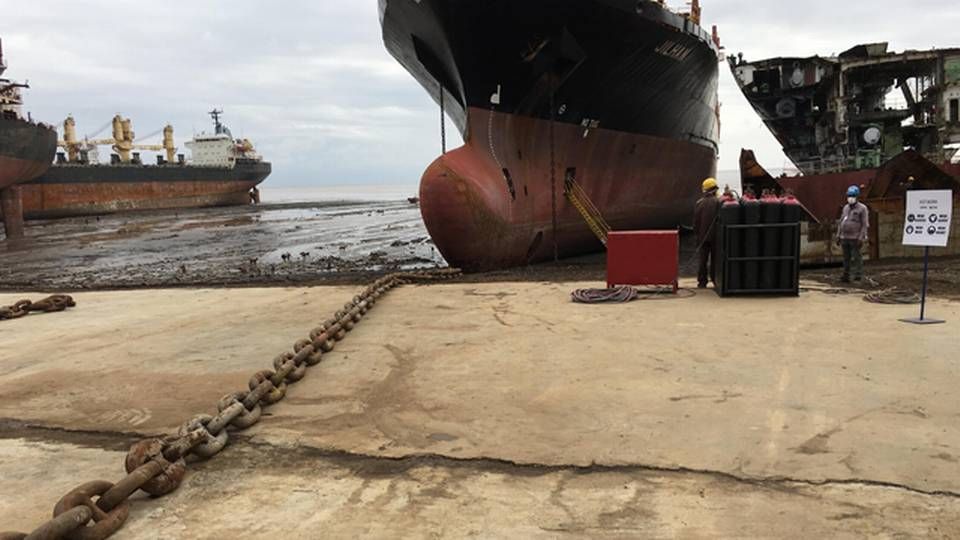
There is no hiding the fact that an audit has recently taken place, as a cement foundation has been laid under the whole yard, as explained by Managing Director Naeem Masani, and especially because new walls have just been built and freshly painted, shielding the shipyard from competitors.
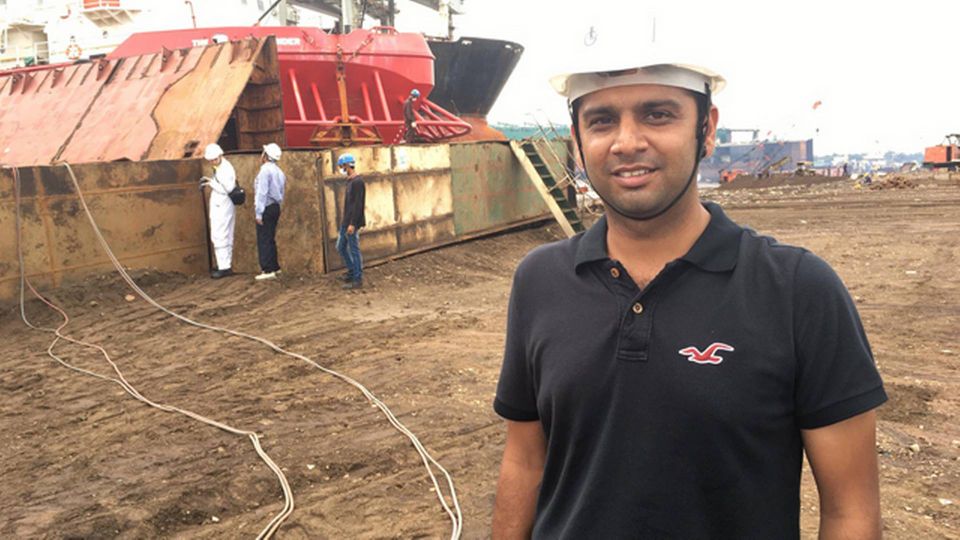
Naeem Masani, General Manager, YS Investments
"We would very much like to be Hong Kong-certified. This work has also meant an upgrade of our employees' safety training. We have already felt the impact of this, in the sense that when workers feel more safe, they have more confidence and work is simply performed faster and more efficiently," says Naeem Masani.
Five yards have been granted certification while at least 12 others have submitted applications. This is the process which, according to Maersk, legitimizes the company's decision to send end-of-life vessels to be scrapped in Alang.
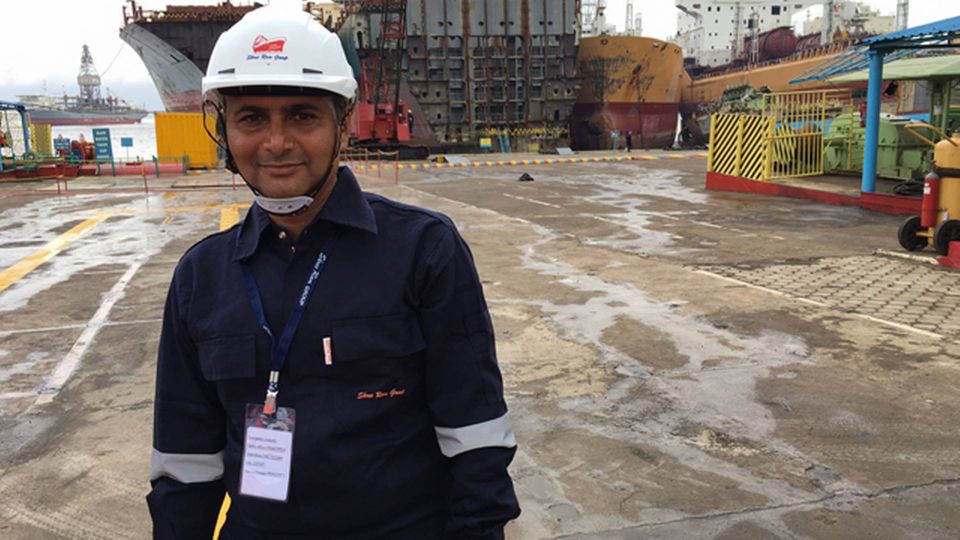
Chetan Patel, Director, Shree Ram Yard
One of the yards which has already obtained certification is the Shree Ram Yard, headed by Director Chetan Patel. This was the yard to which Maersk sent the vessels Maersk Georgia and Maersk Wyoming to be scrapped while the media watched and the political debate intensified.
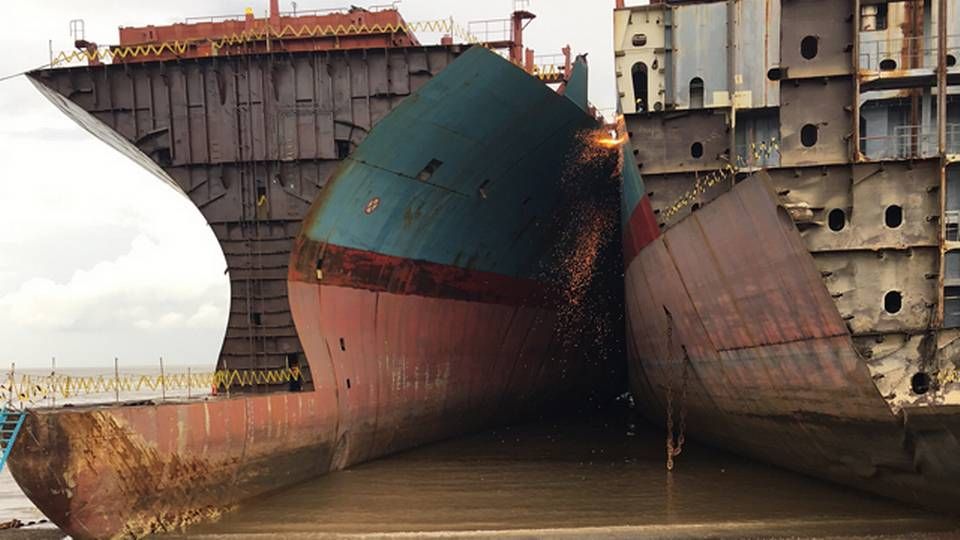
The two vessels arrived at Shree Ram this spring, and their recycling is expected completed within the next four to five months. Maersk projects that many more vessels will be scrapped from the group's different segments during the next five years, and that scrapping will take place in Alang to a much larger extent than before, the Maersk Group's Head of Sustainability, Anette Stube, tells ShippingWatch in Alang. The issue is also financial, as Maersk receives more money per vessel by selling them to be scrapped in Alang, as opposed to the previously used shipbreaking facilities in China and Turkey, where ship recycling is conducted in an entirely different manner.
This was the point of departure for the Maersk Group last year when it began to investigate the possibilities of scrapping in Alang by hiring an employee to exclusively handle customer contact between Maersk and the shipyards, and to make weekly visits to the facilities - an initiative that has now been expanded to including yet another employee and two permanently affiliated consultants. This is the reason Maersk now refers to Alang as "the best opportunity to meet commercial needs in a responsible manner."
The partnership between Maersk and Shree Ram has been close-knit in the past six months, and both parties are looking to communicate the message that commercial interests are not the only thing at stake.
A large sign, which looks brand new, is the first thing that meets the eye when walking onto Shree Ram Yard. "Safety before business," reads the sign.
To meet the new requirements, Shree Ram Yard has poured a solid concrete foundation for scrapping, which reaches almost all the way to the water. Another indication of the yard's upgrade the workers' accommodations, which have been renovated. These accommodations are home to 83 of the yard's almost 100 workers.
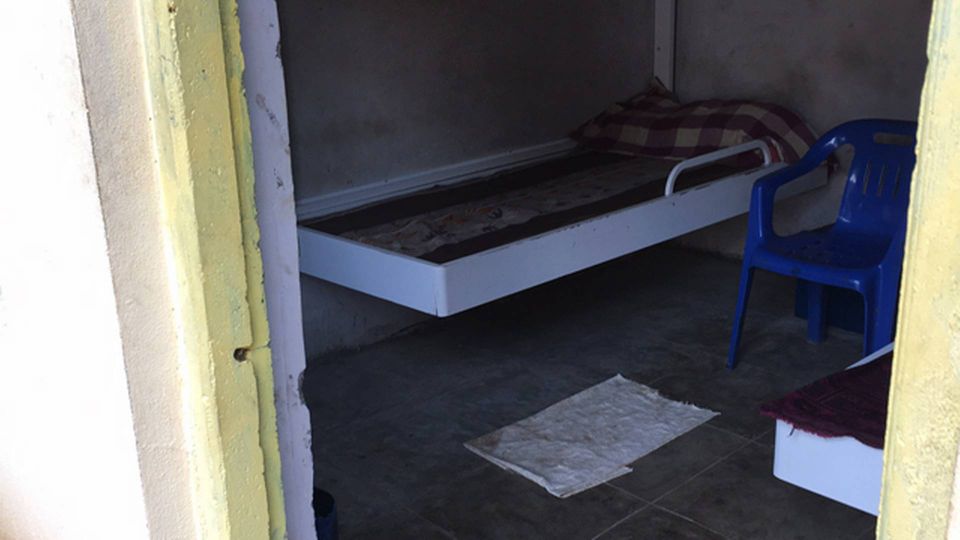
Housing at Shree Ram Yard
Aside from this, the slum areas of the region are mostly what stand out to potential visitors. Of the total 22,000 workers in Alang, many sleep on the ground or in beds consisting of boards under a roof of cardboard and tarp held down by rocks.
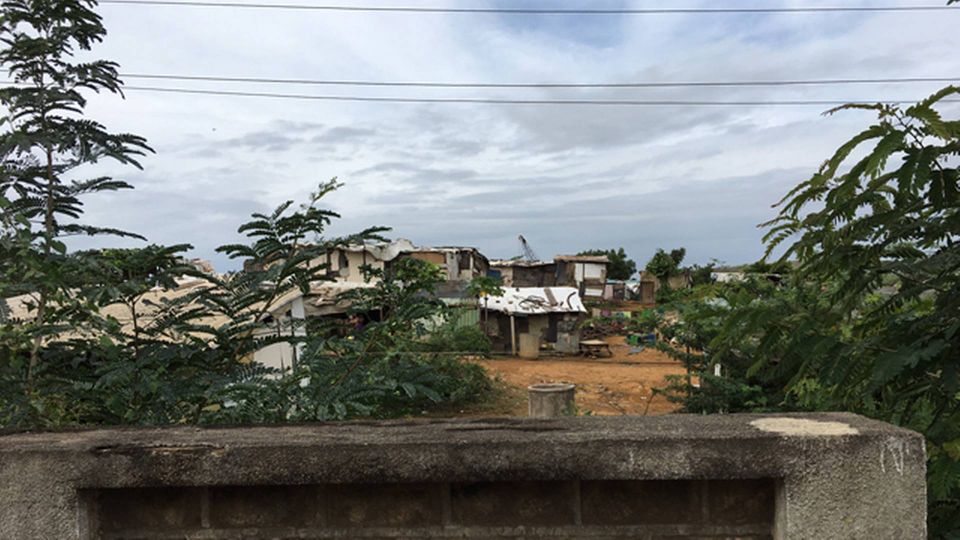
One of the neighborhoods where the majority of Alang sleeps at night
New housing has been built for 1,000 workers, but water installations are not ready and the buildings are not entirely complete, so they remaind empty at this point. There are also doubts as to whether these accommodations will be used anytime soon. Furthermore, it has yet to be decided how to select which workers will live in the buildings.
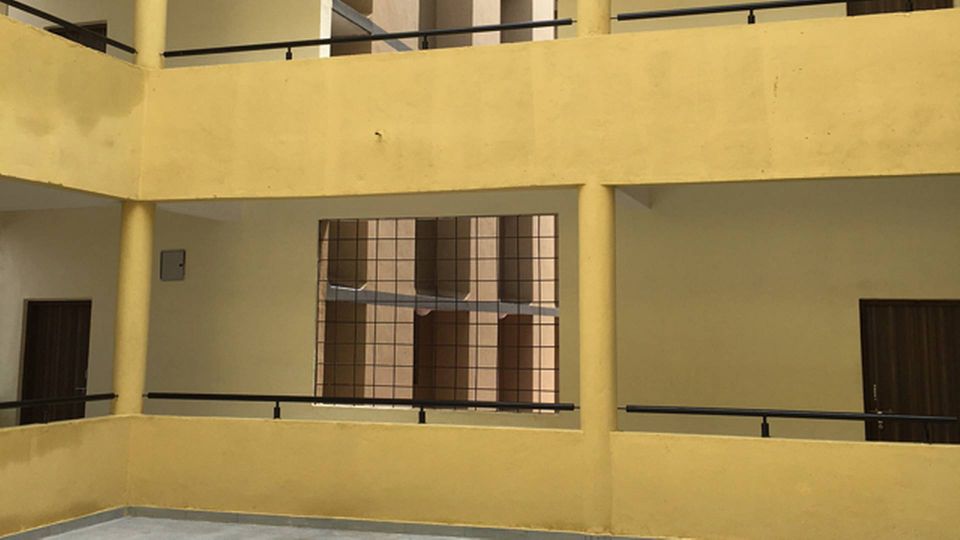
New housing, waiting to be inhabited
The Indian union ASSRGWA was given the opportunity to have an office in Alang in 2005. The Director of the Alang office, Ram Patel, tells ShippingWatch that two things are at the top of the agenda for workers in Alang.

Ram Patel, head of the ASSRGWA union in Alang
Ram Patel works in the dismantling of CO2 systems on the vessels at the yards. He says that the first issue is that workers are usually not paid on a set date each month. There should be security for workers in knowing that their wages be paid between the 5th and 7th of the month. The second thing concerns the union's desire for workers to be paid with checks instead of cash. This would make it easier for them to prove in the long run that they ever worked at the yards, for instance if they need retirement funds paid out.
ASSRGWA otherwise focuses on worker safety. The safety standards are generally too low at the yards, in spite of all yard workers completing a mandatory safety course. The course previously took three days and has been mandatory since 2003. This February, the course was extended to six days. This is the only formal training that workers receive and perhaps the only education some of them have ever had.
A worker was killed as recently as last week when he fell from a vessel at yard number 107 in Alang. His clothes got caught in some material which he was moving from the vessel high up, resulting in the fatal fall.
Ram Patel has an insistent look from under a worn out hat:
"We had a memorial ceremony for him and the yard was closed for five days after the incident. It's good that there are yards trying to upgrade to Hong Kong standards, and it's good that shipping companies are coming to Alang, as the shipbreaking sector here wants to take part in an environmentally friendly and safe transition, but these are just baby steps on a long road ahead," he says.
ShippingWatch was invited to Alang by the Maersk Group. In the next article, we talk to Maersk about why the shipping group changed its stance on Alang.
Alang union: Working conditions are too dangerous
Cash buyer GMS applauds Maersk's arrival in Alang
NGO: Denmark does Maersk a favor by ratifying Hong Kong Convention
Related articles:
Alang union: Working conditions are too dangerous
For subscribers
Cash buyer GMS applauds Maersk's arrival in Alang
For subscribers

